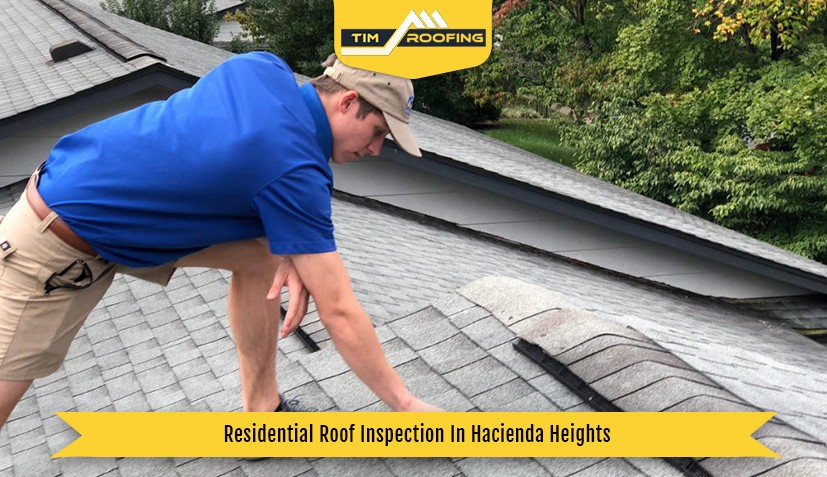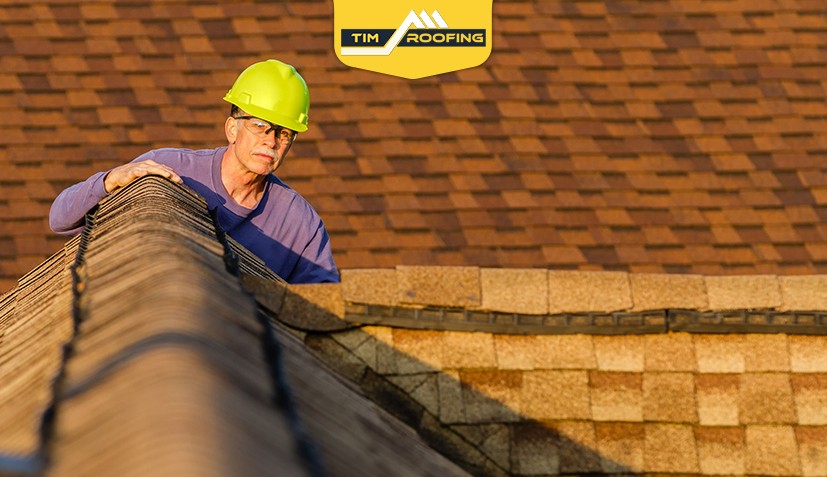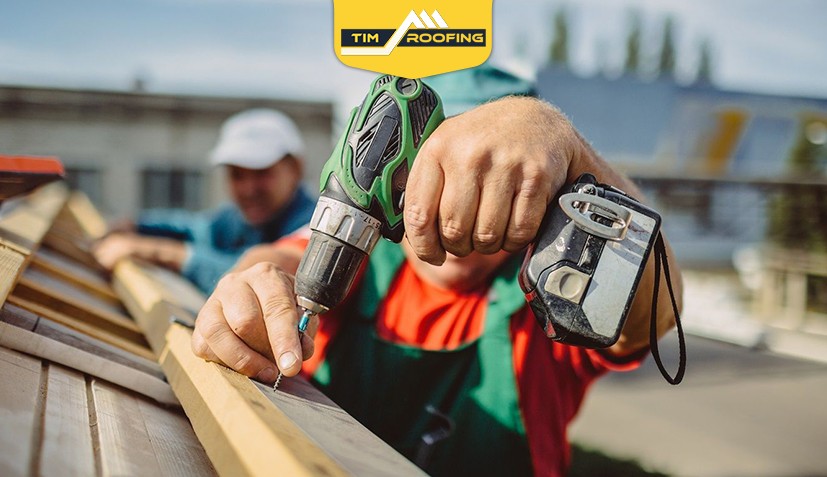The Different Types of Residential Roofing Inspection in Hacienda Heights
Tim Roofing provides variety of services of residential roof inspection services depending on their expertise and the needs of their clients. Here are some common roof inspection services that contractors may offer:

General Roof Inspection
A comprehensive examination of your roof to determine its overall condition, identify any damage or areas of concern, and provide recommendations for repair or replacement.
Leak Inspection
A detailed inspection to identify the source of a leak, whether it’s a result of damaged shingles, flashing, or any other area of the roof.
Storm Damage Inspection
Inspection performed after a storm event to determine if there is any damage to the roof or the supporting structure.
Insurance Inspection
Inspection that assesses the extent of damage caused by an insured event, such as hail, wind, or fire, for the purpose of filing a claim.
Maintenance Inspection
A periodic inspection to assess the condition of the roof and ensure it is properly maintained to extend its lifespan.
Pre-Purchase Inspection
An inspection performed before purchasing a property to identify any potential issues with the roof and provide an estimate of repair or replacement costs.
Thermal Imaging Inspection
An inspection using infrared technology to identify areas of moisture intrusion, insulation gaps, and other issues that are not visible to the naked eye.
The Methods We Use for Residential Roofing Inspection
We conduct residential roof inspections in Hacienda Heights by using a variety of methods, depending on the type of roof and the level of detail required; get in touch today. Here are some common methods used for residential roof inspections:

Visual Inspection
This is the most basic type of inspection, and it involves a visual examination of the roof’s exterior from the ground. This inspection may reveal obvious signs of damage, such as missing or damaged shingles or tiles, and can help to identify areas that require closer inspection.
Walk-Through Inspection
Our inspectors walk on the roof to inspect its condition. This method is more thorough than a visual inspection and can help identify more subtle issues, such as soft spots, rotting or cracked decking, or loose flashing.
Aerial Inspection
An aerial inspection is done by using drones or other unmanned aerial vehicles to inspect the roof. This method is useful for inspecting hard-to-reach areas, such as the roof valleys and ridges, or tall or steep roofs, and can capture high-resolution images or videos of the roof’s condition.
Infrared Inspection
This type of inspection uses thermal imaging technology to identify areas of heat loss or moisture infiltration. This method can identify issues that may not be visible to the naked eye, such as areas of poor insulation or leaks.
Core Sampling
This involves taking a core sample from the roof to inspect its layers, including the decking, insulation, and membrane layers. This method is useful for identifying the extent of damage and determining the remaining lifespan of the roof.
| Inspection Method | Average Cost | Time Taken |
|---|---|---|
| Visual Inspection | $150 – $350 | 30 minutes – 1 hour |
| Walk-Through Inspection | $250 – $500 | 1 – 2 hours |
| Aerial Inspection | $200 – $600 | 1 – 2 hours |
| Infrared Inspection | $400 – $800 | 2 – 4 hours |
| Core Sampling | $200 – $500 per sample | 1 – 2 hours per sample (depending on accessibility) |
Why Do You Need to Inspect Your Roof After Storm Damage?
If your home has recently experienced a storm, hail, high winds, or any other hazards that can damage your roof, it’s important to have a roof inspection done by a qualified professional. Here are some reasons why:
Identify Damage
Storms can cause a variety of damages to your roof, such as broken or missing shingles, dents in metal roofing, or cracked tiles. A detailed residential roof inspection in Hacienda Heights can identify the extent of the damage and help determine if repairs or replacements are necessary.
Safety
Storm damage can weaken the roof structure, and it may not be safe to climb onto the roof or walk on it without the proper safety equipment. A professional roofing contractor has the equipment and expertise to safely inspect your roof and ensure that it’s safe for use.
Insurance Claims
If you need to file an insurance claim for the damages to your roof, a professional roof inspection can provide documentation of the damage, which can be submitted to your insurance company.
Prevent Further Damage
Storm damage that goes unnoticed can lead to further damage over time. Water leaks can cause mold growth, wood rot, and damage to the interior of your home. A roof inspection can identify issues early and help prevent further damage.
The Different Stages of Residential Roofing Inspection
When we conduct a residential roofing inspection in Hacienda Heights to assess any damage that may have occurred. Here are the stages of our process

Exterior Inspection
First, the exterior is checked for any visible damage such as missing shingles, cracks or holes, dents or dings, or any other signs of impact. The gutters, downspouts, and roof flashing, will also be inspected.
Interior Inspection
Next, the interiors of the roof are inspected for any signs of water damage, such as water stains or leaks, mold or mildew growth, or any other signs of moisture. The attic and crawl spaces are also checked for any signs of water infiltration.
Structural Inspection
At this stage, the overall structure of the roof is checked for any signs of damage to the supporting structure, such as sagging or bowing, or any other signs of structural damage.
Document Damage
Next, the pictures are taken, and any damage found during the inspection is inspected. This will help you when you file an insurance claim or work with a roofing contractor.
Clean Up
Any debris that may have fallen on the roof or in the gutters during the storm will be removed. This will prevent further damage to the roof and ensure that water can flow properly through the gutters.

